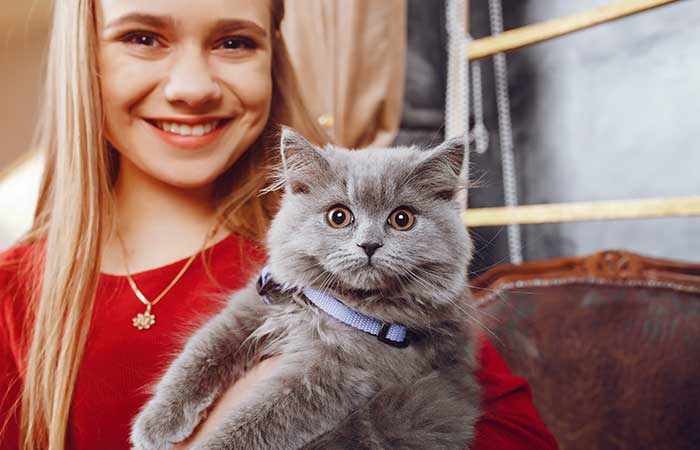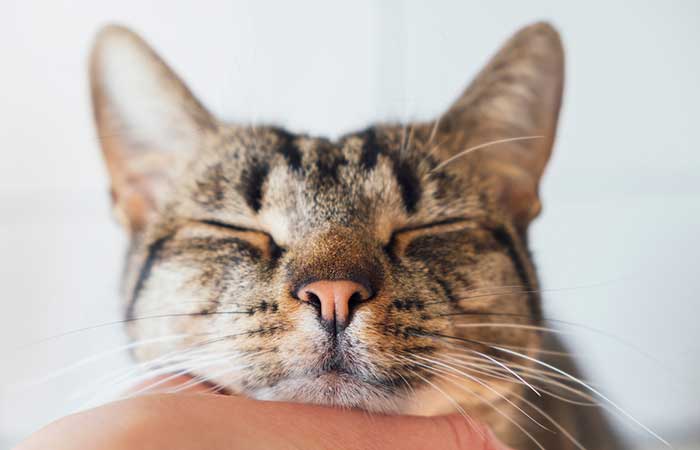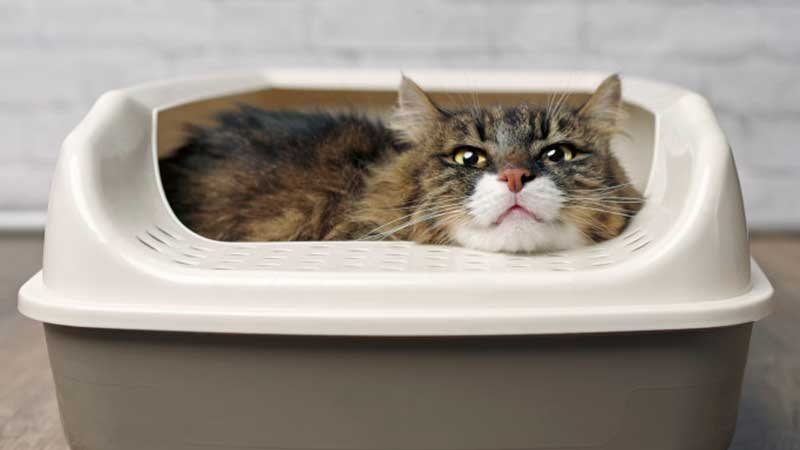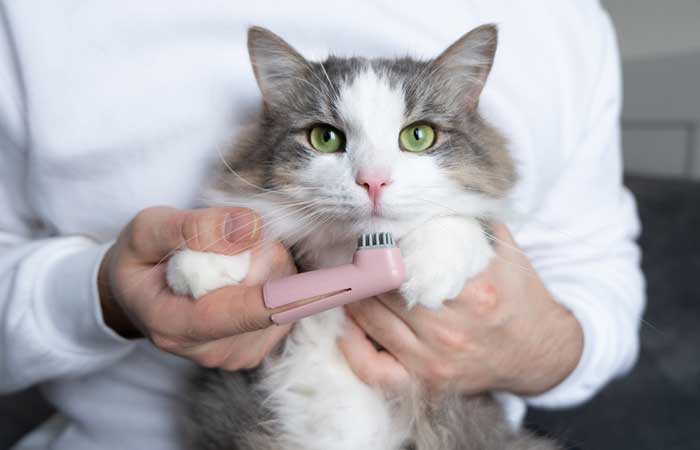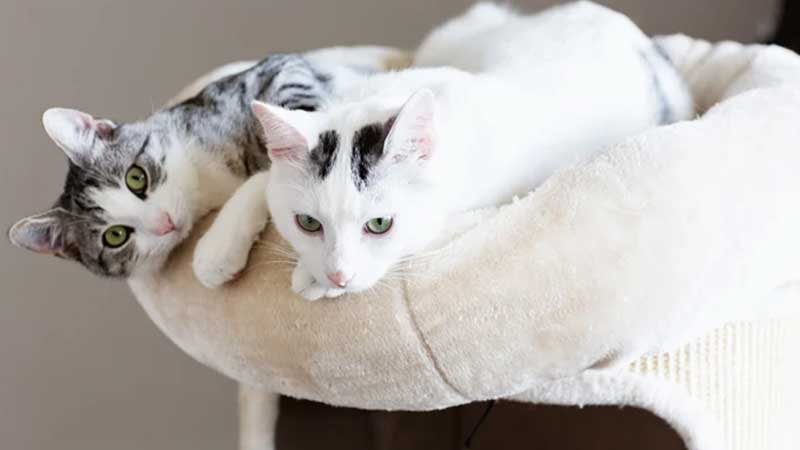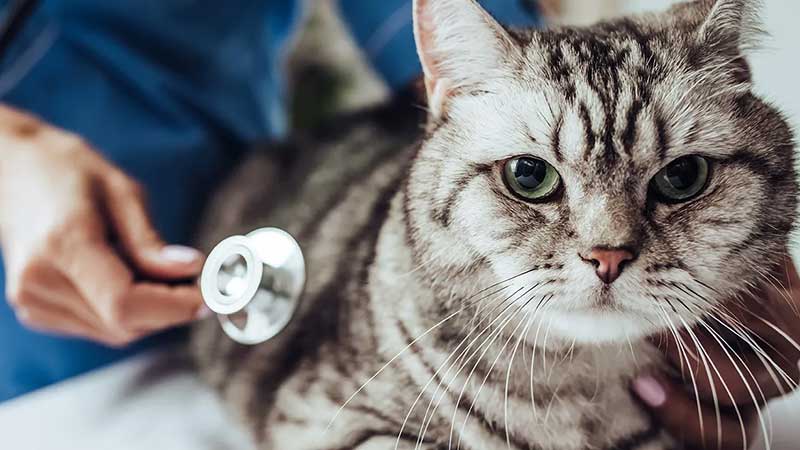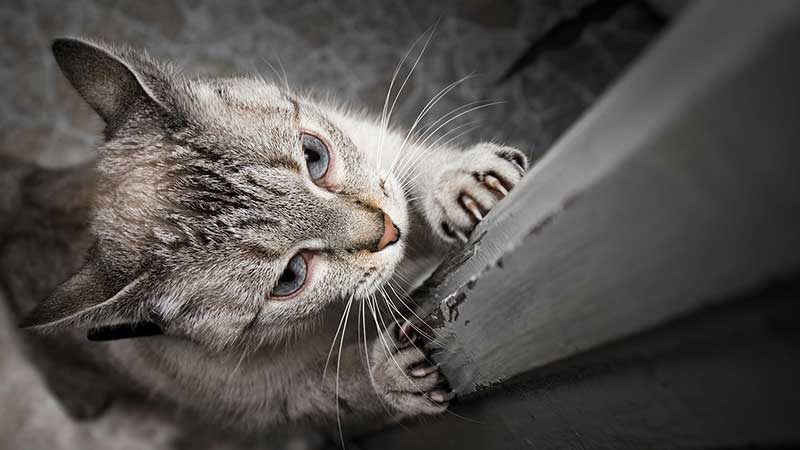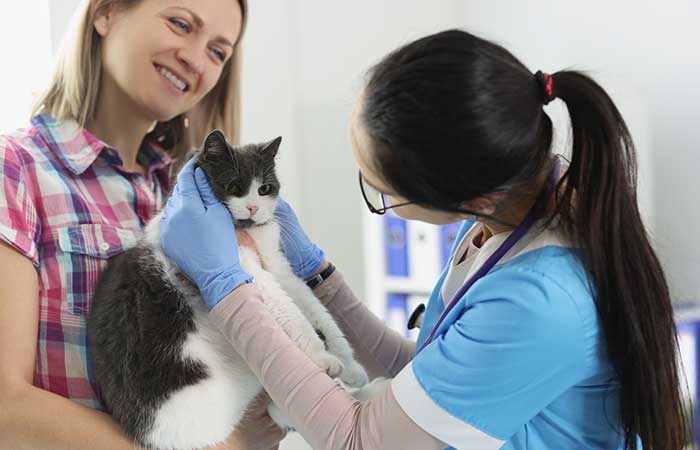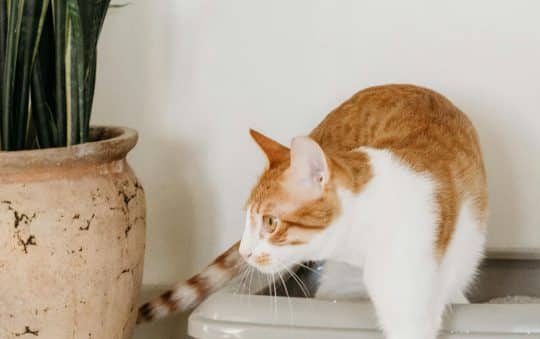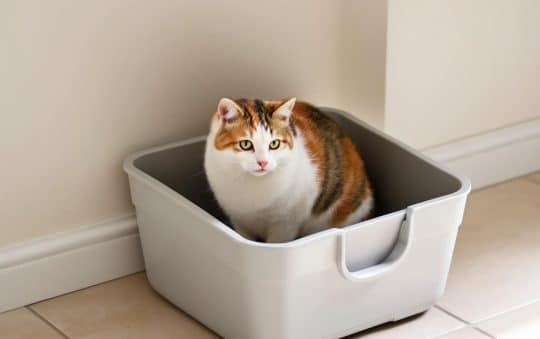Mastering proper cat care is fundamental for ensuring your feline companion thrives in your home. Understanding comprehensive cat care significantly impacts your pet’s quality of life, affecting everything from physical health to emotional wellbeing. Whether you’re a first-time cat parent or an experienced owner, staying current with best practices helps create an enriching environment for your furry friend. Recent advances in feline medicine and behavior studies have revolutionized our understanding of cat care, leading to improved techniques and approaches that enhance the human-animal bond.
The journey of cat ownership brings unique challenges and rewards, requiring dedication to learning and adapting care routines. Modern cat care encompasses not just basic needs but also considers environmental enrichment, behavioral health, and preventive medicine. Research shows that cats who receive comprehensive care live longer, healthier lives and develop stronger bonds with their human companions. Furthermore, understanding your cat’s individual needs helps create a customized care approach that addresses their specific requirements based on age, health status, and personality.
Essential Cat Care Equipment Guide
Creating an optimal environment for your cat requires careful consideration of equipment and supplies. The right tools not only make care easier but also significantly impact your cat’s quality of life. Modern cat care equipment has evolved considerably, incorporating innovative designs and materials that better serve both cats and their owners.
A well-equipped home environment starts with understanding your cat’s basic needs and extends to accommodating their natural behaviors and instincts. Quality equipment represents an investment in your cat’s health and happiness, often preventing common behavioral issues and health problems before they develop. Additionally, selecting the right equipment from the start saves money long-term by avoiding frequent replacements of inferior products.
Basic Necessities
When selecting feeding equipment, consider that stainless steel and ceramic bowls prevent bacterial growth and facial acne, common issues with plastic alternatives. Wide, shallow bowls accommodate sensitive whiskers, preventing stress during feeding. Position water sources away from food to mimic natural hunting and drinking behaviors, encouraging better hydration practices.
- Premium stainless steel or ceramic bowls with non-slip bases
- Orthopedic beds with machine-washable covers placed in quiet areas
- Multi-textured scratching posts at least 1.5 times your cat’s stretched length
- Airline-approved carrier with comfortable padding and secure latches
- Professional grooming tools including metal combs and specialized brushes
Health and Safety Equipment
Creating a safe environment requires thoughtful preparation and appropriate safety equipment. Modern cat-specific first aid kits should include not just basic supplies but also digital thermometers and pet-specific bandages. Additionally, investing in proper cleaning supplies helps maintain a healthy environment while protecting your cat from harmful chemicals.
Consider installing climbing deterrents in dangerous areas and securing loose wires or blind cords that pose strangulation risks. Window screens should be reinforced to prevent falls, particularly in high-rise buildings where “high-rise syndrome” poses a serious risk. Furthermore, establishing a designated safe room equipped with essential supplies provides security during emergencies.
- Comprehensive first aid kit with pet-specific medications and digital thermometer
- Cat-safe cleaning products certified by veterinary organizations
- Reinforced window screens with secure mounting systems
- Emergency evacuation kit including portable litter box and supplies
- Microchip-activated feeders for households with multiple cats
Enrichment Essentials
Environmental enrichment plays a crucial role in preventing behavioral issues and promoting physical and mental health. Modern enrichment tools should engage natural hunting, climbing, and problem-solving behaviors. Research indicates that cats spend up to 16 hours daily sleeping, making comfortable and strategically placed resting areas essential.
Creating engaging play spaces requires understanding your cat’s preferred activities and natural behaviors. Vertical space utilization proves particularly important in smaller homes, where wall-mounted systems can significantly expand your cat’s territory. Furthermore, providing various types of enrichment tools helps prevent boredom and associated behavioral problems.
For more adventurous cats, a properly fitted cat harness enables safe outdoor exploration under supervision. This additional form of enrichment satisfies natural curiosity while maintaining safety. Modern harness designs provide secure, comfortable fits allowing natural movement during supervised outdoor adventures.
- Electronic interactive toys with random movement patterns
- Multi-level wall-mounted climbing systems with secure anchoring
- Adjustable cat harness for supervised outdoor exploration
- Food puzzle toys with adjustable difficulty levels
- Temperature-controlled window beds with weather-resistant mounting
Creating the Perfect Cat Care Environment
Establishing an enriching living space fundamentally shapes your cat’s physical and emotional wellbeing. A well-designed environment supports natural behaviors while preventing stress-related issues. Recent studies in feline behavior demonstrate that cats require both horizontal and vertical territory to maintain optimal mental health.
Environmental enrichment begins with understanding your cat’s natural instincts. In the wild, cats establish complex territories with specific areas for different activities. Creating a similar environment in your home helps reduce stress and prevent behavioral problems. A quality cat tree serves as the cornerstone of your cat’s vertical territory, providing essential elevation and observation opportunities.
The placement of resources throughout your home significantly impacts your cat’s stress levels and behavior patterns. Consider the concept of core territory – areas where your cat spends most of their time – when arranging furniture and cat-specific items. Research indicates that cats prefer having multiple escape routes and elevated observation points in their core territory.
Strategic Space Planning
When designing your cat’s environment, consider traffic patterns and noise levels in different areas of your home. Cats typically prefer quieter spaces for essential activities like eating and using the litter box. Creating multiple resource stations throughout the house prevents competition in multi-cat households and reduces stress-related behaviors.
Temperature regulation plays a crucial role in environmental comfort. Cats naturally seek out warm spots but need access to cooler areas during hot weather. Position resting areas away from drafts and direct sunlight while ensuring adequate ventilation. Consider installing window perches with seasonal padding adjustments to maintain comfort year-round.
- Create designated zones for essential activities (sleeping, eating, elimination) minimum 3 feet apart
- Install multiple elevated observation points with clear escape routes
- Maintain consistent temperature zones between 65-78 degrees Fahrenheit
- Establish quiet retreats away from household traffic
- Position scratching surfaces near sleeping and social areas
Advanced Litter Box Solutions
Modern litter box design considers both cat comfort and owner convenience. Select boxes at least 1.5 times your cat’s length to allow natural movement during elimination. Consider removing covers unless specifically preferred by your cat, as enclosed spaces can trap odors and make some cats feel vulnerable.
For those seeking enhanced convenience, automatic litter boxes offer an innovative solution to daily maintenance. These self-cleaning units can significantly reduce manual scooping while maintaining consistent box cleanliness. However, even with an automatic cat litter box, regular monitoring and maintenance are essential to ensure proper operation and your cat’s comfort.
Developing a consistent cleaning routine prevents many common litter box issues. Scoop boxes at least twice daily, performing complete litter changes weekly. Use enzyme-based cleaners for thorough sanitization, avoiding ammonia-based products that might attract cats to eliminate inappropriately.
- Maintain one box per cat plus one extra, distributed across different home areas
- Place boxes in quiet locations with multiple escape routes and good visibility
- Clean boxes twice daily, replacing litter completely weekly with thorough sanitization
- Monitor elimination patterns for early detection of health issues
- Use unscented, fine-grained clumping litter unless cat shows other preferences
Advanced Cat Care Nutrition Guidelines
Understanding feline nutrition represents one of the most critical aspects of responsible cat care. Cats are obligate carnivores, requiring specific nutrients only found in animal proteins. Recent nutritional research reveals that proper dietary management prevents numerous health issues and extends life expectancy significantly.
Incorporating high fiber cat food helps maintain digestive health while preventing common issues like hairballs and constipation. However, fiber content must be balanced carefully with protein requirements. Modern nutritional science suggests that cats thrive on diets containing 30-40% protein, 20-30% fat, and carefully regulated carbohydrate levels.
Understanding your cat’s life stage and activity level helps determine appropriate portions and nutritional requirements. Kittens require more frequent feeding and higher protein levels, while senior cats often benefit from modified protein sources and additional supplements. Additionally, monitoring body condition scores helps prevent obesity, a growing concern in domestic cats.
Advanced Feeding Strategies
Meal timing significantly impacts feline health and behavior. Wild cats naturally eat multiple small meals throughout the day, hunting up to 20 times within 24 hours. Replicating this pattern through measured portion control or automated feeding systems helps prevent obesity while satisfying natural feeding behaviors.
Water intake plays a crucial role in preventing common health issues, particularly urinary tract problems. Many cats exhibit a preference for moving water sources, making pet fountains an excellent investment. Position water sources away from food bowls to accommodate natural instincts, as cats instinctively avoid water near their kill sites.
- Calculate daily caloric needs based on ideal body weight (20-30 calories per pound)
- Implement measured feeding schedules with portions divided into 4-6 small meals
- Monitor protein-fat ratios in commercial foods (minimum 30% protein, 20% fat)
- Position multiple water sources throughout living space, away from food areas
- Track food consumption patterns and weight changes monthly
Comprehensive Dental Health Management
Dental health significantly impacts overall wellness, with poor oral hygiene often leading to systemic health issues. Research indicates that over 85% of cats develop periodontal disease by age three, making preventive dental care essential. Understanding the progression of dental disease helps implement effective prevention strategies.
Professional dental care combines at-home maintenance with regular veterinary assessments. While dental treats provide supplementary care, they shouldn’t replace regular brushing and professional cleanings. Modern veterinary dentistry emphasizes prevention through regular maintenance rather than treating established disease.
Early detection of dental problems prevents serious complications. Signs of dental disease include bad breath, drooling, difficulty eating, and behavior changes. Additionally, some breeds show predisposition to specific dental issues, requiring customized prevention strategies.
Advanced Dental Care Techniques
Establishing an effective dental care routine requires patience and consistency. Begin dental care early in life to acclimate cats to oral handling. Use cat-specific toothbrushes and enzymatic toothpaste designed for feline oral chemistry. Never use human dental products, as they can contain harmful ingredients.
Regular professional dental assessments include thorough examination, dental radiographs, and professional cleaning when necessary. Modern veterinary dental procedures utilize advanced imaging techniques to detect problems below the gumline, where many serious issues originate.
- Implement daily brushing using feline-specific enzymatic toothpaste and soft brushes
- Schedule professional dental evaluations every 6-12 months based on risk factors
- Monitor for early warning signs including behavior changes and eating difficulties
- Use approved dental products certified by veterinary dental organizations
- Document dental care routines and professional treatment history
Essential Grooming in Modern Cat Care
Professional grooming practices significantly impact feline health and comfort. While cats naturally groom themselves, domestic environments create unique challenges requiring human intervention. Understanding coat types, skin conditions, and grooming techniques ensures effective maintenance while strengthening the human-animal bond.
Implementing a proper grooming routine using a quality deshedding brush prevents matting and reduces hairball formation. Regular brushing removes loose fur, distributes natural oils, and stimulates blood circulation. Furthermore, grooming sessions provide opportunities to check for abnormalities including skin issues, lumps, or parasites.
Long-haired breeds require particularly detailed attention to prevent painful matting and skin problems. Understanding coat layers and growth patterns helps prevent common grooming mistakes. Additionally, seasonal changes affect shedding patterns, requiring adjusted grooming schedules throughout the year.
Advanced Grooming Techniques
Professional groomers emphasize the importance of using appropriate tools for different coat types. Fine-toothed combs work well for removing tangles, while slicker brushes excel at removing loose undercoat. Understanding proper brush stroke techniques prevents skin irritation while maximizing effectiveness.
Bathing, though rarely necessary for most cats, requires special consideration when needed. Use cat-specific shampoos and maintain proper water temperature to prevent stress. Creating positive associations with grooming through rewards and gentle handling improves cooperation during sessions.
- Develop customized grooming schedules based on coat type and seasonal changes
- Implement systematic grooming patterns starting from head to tail
- Document skin conditions or abnormalities discovered during grooming
- Maintain professional grooming tools with regular cleaning and replacement
- Create positive associations through reward-based grooming sessions
Preventive Parasite Control Strategies
Modern parasite prevention requires comprehensive understanding of lifecycle patterns and transmission routes. Effective control combines preventive treatments with environmental management. Recent veterinary research emphasizes year-round protection against both internal and external parasites.
Using a reliable flea & tick collar provides continuous protection, but represents only one component of complete parasite control. Understanding resistance patterns and rotating active ingredients prevents treatment failures. Additionally, environmental control measures play crucial roles in breaking parasite lifecycles.
Indoor cats, while at lower risk, still require regular parasite prevention. Common misconceptions about indoor cats’ immunity to parasites can lead to preventable infestations. Furthermore, some parasites pose zoonotic risks, potentially affecting human family members.
Comprehensive Parasite Management
Effective parasite control requires understanding local risk factors and seasonal patterns. Different geographical regions face varying parasite challenges, necessitating customized prevention strategies. Regular monitoring and documentation help identify treatment effectiveness and potential resistance issues.
Professional veterinary guidance helps select appropriate preventive products based on individual risk factors. Consider age, lifestyle, and existing health conditions when choosing prevention methods. Additionally, maintain consistent treatment schedules to prevent gaps in protection.
- Implement year-round prevention protocols based on geographical risks
- Combine chemical prevention with environmental management strategies
- Monitor treatment effectiveness through regular parasite screening
- Document prevention schedules and product rotation plans
- Address environmental factors contributing to parasite populations
Advanced Mental Stimulation Techniques

Cognitive health significantly impacts overall wellbeing, requiring dedicated attention to mental stimulation. Modern behavioral science emphasizes the importance of environmental enrichment and structured play sessions. Understanding natural feline behavior patterns helps create engaging activities that satisfy instinctual needs.
Providing interactive cat toys stimulates problem-solving abilities while preventing boredom-related behavioral issues. Rotate toys regularly to maintain novelty and interest. Furthermore, incorporate food puzzles and hunting simulations to engage natural predatory instincts.
Research indicates that mental stimulation helps prevent cognitive decline in aging cats. Regular engagement through play and training maintains mental acuity while strengthening social bonds. Additionally, structured enrichment activities help reduce stress-related behaviors in indoor cats.
Seasonal Cat Care Adaptations
Understanding seasonal influences on feline health enables proactive care adjustments throughout the year. Environmental changes significantly impact behavior patterns, activity levels, and health needs. Modern research demonstrates that cats require specific seasonal adaptations in diet, exercise, and environmental enrichment.
Summer months present unique challenges including increased risk of dehydration and heat stress. Indoor temperatures significantly affect feline comfort and behavior. Understanding heat regulation in cats helps prevent temperature-related health issues while maintaining comfort. Additionally, increased parasite activity during warmer months requires enhanced prevention strategies.
Winter seasons bring different challenges, particularly regarding indoor air quality and exercise opportunities. Reduced daylight hours can affect mood and activity patterns, requiring adjusted enrichment strategies. Furthermore, winter months often see increases in weight gain and decreased activity, necessitating careful monitoring.
Advanced Seasonal Management
Seasonal grooming needs vary significantly, particularly for double-coated breeds. Spring and fall typically see increased shedding, requiring enhanced grooming protocols. Understanding coat changes helps prevent matting issues while maintaining skin health through seasonal transitions.
Humidity levels affect both comfort and respiratory health throughout changing seasons. Modern home environment management includes humidity monitoring and adjustment. Additionally, seasonal allergies can affect cats, requiring careful observation and appropriate environmental modifications.
- Implement seasonal diet adjustments accounting for activity level changes
- Modify indoor environmental conditions including humidity and temperature
- Enhance grooming protocols during high-shedding seasons
- Adjust exercise and enrichment activities based on seasonal patterns
- Monitor seasonal health indicators including weight and water consumption
Expert Multi-Cat Household Management
Managing multiple cats requires deep understanding of feline social structures and territory needs. Contemporary behavioral science emphasizes the importance of resource distribution and space management. Understanding social hierarchies helps prevent tension while promoting harmonious coexistence.
Successful multi-cat households require careful planning of essential resource placement. Each cat needs access to key resources without facing social pressure or competition. Furthermore, vertical space becomes increasingly important as cat numbers increase, requiring strategic territory expansion.
Social dynamics between cats can shift over time, requiring ongoing observation and adjustment. New introductions must follow careful protocols to prevent territorial disputes. Additionally, understanding individual personality types helps predict and prevent potential conflicts.
Advanced Social Management Strategies
Creating successful multi-cat environments requires understanding of both physical and social space requirements. Modern behavioral research suggests a minimum of 18 square feet of accessible space per cat. Understanding traffic patterns and escape routes helps prevent confrontations while reducing stress.
Health monitoring becomes more complex with multiple cats. Individual feeding stations help track consumption patterns while preventing food guarding behaviors. Furthermore, regular veterinary screening becomes increasingly important as group size increases.
- Design multiple resource stations ensuring 3-foot separation minimum
- Create vertical territory expansions with individual resting spaces
- Monitor social interactions documenting any behavioral changes
- Implement individual feeding stations with monitoring systems
- Maintain separate litter facilities exceeding number of cats
Comprehensive Health Monitoring Systems
Establishing effective health monitoring protocols ensures early detection of potential issues. Modern preventive care emphasizes regular monitoring of key health indicators. Understanding normal patterns helps identify concerning changes requiring veterinary attention.
Digital tracking systems help maintain accurate health records including weight trends, appetite changes, and behavior patterns. Regular documentation enables identification of subtle changes that might otherwise go unnoticed. Furthermore, sharing detailed records with veterinary professionals improves diagnostic accuracy.
Behavioral changes often provide early warning signs of health issues. Understanding normal patterns helps distinguish between concerning changes and normal variations. Additionally, monitoring social interactions in multi-cat households provides valuable health insights.
Life Stage-Specific Cat Care Protocols
Understanding age-related changes enables appropriate care adjustments throughout your cat’s life. Modern veterinary medicine emphasizes different care requirements for each life stage. Recognizing normal age-related changes helps distinguish them from health concerns requiring intervention.
Kitten development requires carefully structured care protocols during critical socialization periods. Early experiences significantly impact adult behavior patterns and social adjustment. Understanding developmental milestones helps ensure appropriate interventions and support during crucial growth phases.
Senior cats require specialized attention to maintain quality of life. Age-related changes affect everything from nutrition to environmental needs. Furthermore, regular monitoring becomes increasingly important as cats age, enabling early detection of common senior health issues.
Advanced Age-Specific Management
Adult cats between ages 3-7 represent the maintenance phase of cat care. This period focuses on preventing health issues while maintaining optimal condition. Understanding adult cat needs helps prevent common middle-age health issues including obesity and dental disease.
Geriatric cats over 12 years require particularly careful monitoring and support. Modern veterinary care enables cats to live longer, healthier lives with appropriate management. Additionally, understanding cognitive changes helps provide appropriate environmental and social support for aging cats.
- Implement age-appropriate nutrition protocols with regular adjustments
- Monitor developmental milestones during growth phases
- Adjust environmental enrichment based on age-related needs
- Schedule age-appropriate veterinary screening protocols
- Document age-related changes in behavior and health patterns
Advanced Behavioral Understanding in Cat Care
Modern behavioral science provides deep insights into feline psychology and social needs. Understanding natural behaviors helps create environments supporting psychological well-being. Recent research reveals increasingly complex aspects of feline social structures and communication patterns.
Stress recognition plays crucial roles in preventing behavioral issues. Understanding subtle stress indicators enables early intervention before problems escalate. Furthermore, recognizing normal versus problematic behaviors helps prevent unnecessary interventions while addressing genuine concerns.
Environmental modifications often resolve behavioral challenges without medication. Understanding environmental influences on behavior enables effective non-pharmaceutical interventions. Additionally, modern behavior modification techniques emphasize positive reinforcement over punishment.
Advanced Behavioral Management
Creating predictable routines helps reduce anxiety while promoting confident behaviors. Understanding daily activity patterns enables appropriate scheduling of interactions and care procedures. Regular observation helps identify patterns requiring intervention or adjustment.
Social interaction needs vary significantly between individuals. Some cats require extensive human interaction while others prefer limited contact. Understanding individual preferences helps provide appropriate social opportunities while respecting personal space needs.
- Establish consistent daily routines supporting natural behavior patterns
- Monitor stress indicators implementing early interventions
- Document behavioral changes noting potential triggers
- Create individual social interaction plans based on preferences
- Implement positive reinforcement training protocols
Emergency Preparedness in Advanced Cat Care
Comprehensive emergency planning ensures appropriate response during critical situations. Modern emergency protocols emphasize preparation and prevention while maintaining readiness for various scenarios. Understanding common emergencies helps develop appropriate response plans.
Creating detailed emergency kits supports quick response during critical situations. Regular updates ensure supplies remain current and appropriate. Furthermore, maintaining relationships with emergency veterinary services ensures access during critical situations.
Different emergency types require specific response protocols. Understanding appropriate first aid measures helps stabilize situations while accessing professional care. Additionally, regular review and updating of emergency procedures ensures continued readiness.
Special Health Conditions in Advanced Cat Care
Managing cats with chronic conditions requires detailed understanding of disease processes and management strategies. Modern veterinary medicine provides numerous treatment options for common feline health issues. Understanding treatment protocols helps provide optimal support while maintaining quality of life.
Diabetes management requires careful monitoring of blood glucose levels and insulin administration. Regular testing and documentation helps maintain appropriate control while preventing complications. Furthermore, understanding dietary impacts on blood glucose helps optimize management protocols.
Kidney disease, particularly common in aging cats, requires specialized management approaches. Understanding fluid balance and dietary modifications helps support kidney function while maintaining comfort. Additionally, regular monitoring of key health indicators enables appropriate adjustment of treatment protocols.
Chronic Disease Management
Arthritis affects many aging cats, requiring environmental modifications and pain management strategies. Understanding mobility challenges helps create supportive environments while maintaining quality of life. Modern treatment options include various approaches from medication to alternative therapies.
Thyroid conditions require careful monitoring and consistent medication administration. Understanding symptoms helps identify treatment effectiveness while enabling appropriate adjustments. Regular veterinary assessment ensures optimal management of complex conditions.
- Create detailed management plans for specific health conditions
- Implement monitoring protocols tracking treatment effectiveness
- Schedule regular veterinary assessments adjusting care as needed
- Document medication administration and response patterns
- Maintain emergency protocols specific to chronic conditions
Advanced Environmental Optimization
Creating optimal indoor environments significantly impacts feline health and behavior. Modern understanding of environmental needs has evolved considerably, emphasizing the importance of species-appropriate spaces. Research demonstrates strong connections between environment and overall wellbeing.
Air quality plays crucial roles in respiratory health and comfort. Understanding ventilation needs helps prevent common respiratory issues while maintaining comfortable environments. Additionally, monitoring air quality indicators helps identify potential problems requiring intervention.
Temperature regulation significantly impacts comfort and activity levels. Understanding optimal temperature ranges helps maintain appropriate environmental conditions throughout seasonal changes. Furthermore, providing temperature variation within safe ranges enables natural thermal regulation.
Environmental Health Management
Lighting patterns affect both physical and behavioral health. Understanding natural light cycles helps create appropriate artificial lighting when needed. Modern research reveals impacts of light exposure on various health aspects including sleep patterns and activity levels.
Sound management becomes increasingly important in modern environments. Understanding noise impacts helps create calm environments supporting relaxation and sleep. Additionally, providing appropriate sound enrichment can benefit some cats while requiring careful monitoring of individual responses.
- Monitor environmental factors including temperature, humidity, and air quality
- Create appropriate lighting cycles supporting natural rhythms
- Implement sound management strategies reducing stress
- Maintain clean air through appropriate filtration systems
- Document environmental measurements enabling trend identification
Long-Term Cat Care Planning and Documentation
Establishing comprehensive long-term care plans ensures consistent, high-quality care throughout your cat’s life. Modern pet care emphasizes detailed documentation and regular plan updates. Understanding future care needs helps prepare for various life stages while maintaining optimal health support.
Financial planning plays crucial roles in ensuring access to necessary care. Understanding potential costs helps prepare for both routine and emergency expenses. Furthermore, insurance options provide additional security while requiring careful evaluation of coverage options.
Record keeping becomes increasingly important as care complexity increases. Digital tracking systems help maintain accurate histories while enabling trend identification. Additionally, sharing detailed records with veterinary professionals improves care coordination and treatment planning.
Advanced Care Planning Strategies
Succession planning ensures continued care if primary caregivers become unavailable. Understanding care requirements helps create detailed instructions for potential future caregivers. Modern planning tools provide various options for documenting and sharing care information.
Regular plan reviews enable appropriate updates reflecting changing needs. Understanding care evolution helps maintain relevant, effective protocols. Furthermore, documenting plan modifications helps track care progression while identifying successful strategies.
- Develop comprehensive care plans including emergency protocols
- Create detailed financial plans covering routine and emergency care
- Maintain digital records ensuring accurate care histories
- Establish succession plans documenting detailed care requirements
- Schedule regular plan reviews enabling appropriate updates
Advanced Training and Behavioral Modification
Modern training techniques employ scientific understanding of feline learning patterns. Positive reinforcement methods prove particularly effective while maintaining trust. Understanding learning theory helps implement successful training programs while avoiding common pitfalls.
Clicker training provides precise communication during learning processes. Understanding timing and reward systems helps create effective training sessions. Furthermore, consistent techniques enable successful skill development while strengthening human-animal bonds.
Behavioral modification requires patient, systematic approaches. Understanding behavior patterns helps identify appropriate intervention points. Additionally, documenting progress enables evaluation of technique effectiveness while guiding necessary adjustments.
Training Implementation Strategies
Training success depends heavily on understanding individual motivations. Food rewards work well for many cats, while others respond better to play or attention. Modern training approaches emphasize identifying effective individual motivators while maintaining consistent reward delivery.
Environmental modification often supports successful training programs. Understanding environmental impacts helps create supportive learning environments. Furthermore, removing barriers to success increases positive outcomes while reducing frustration.
- Implement science-based positive reinforcement techniques
- Establish consistent training protocols with clear goals
- Document training progress enabling effectiveness evaluation
- Create supportive environments promoting learning success
- Maintain realistic expectations while celebrating progress
Conclusion: Excellence in Modern Cat Care
Successful cat care requires dedication to understanding and implementing comprehensive care strategies. Modern approaches emphasize preventive care while maintaining readiness for various challenges. Furthermore, ongoing education ensures awareness of evolving care standards and techniques.
Regular evaluation of care effectiveness enables appropriate adjustments when needed. Understanding quality indicators helps maintain high care standards while identifying improvement opportunities. Additionally, maintaining professional relationships supports optimal care delivery through various life stages.
The future of cat care continues evolving with new research and technology. Understanding current best practices while remaining open to improvements helps maintain optimal care standards. Most importantly, dedication to continuous improvement ensures the best possible care for our feline companions.
- Maintain commitment to comprehensive care implementation
- Continue education regarding evolving care standards
- Regularly evaluate care effectiveness making necessary adjustments
- Document successes and challenges guiding future improvements
- Celebrate the unique bond between humans and their feline companions
